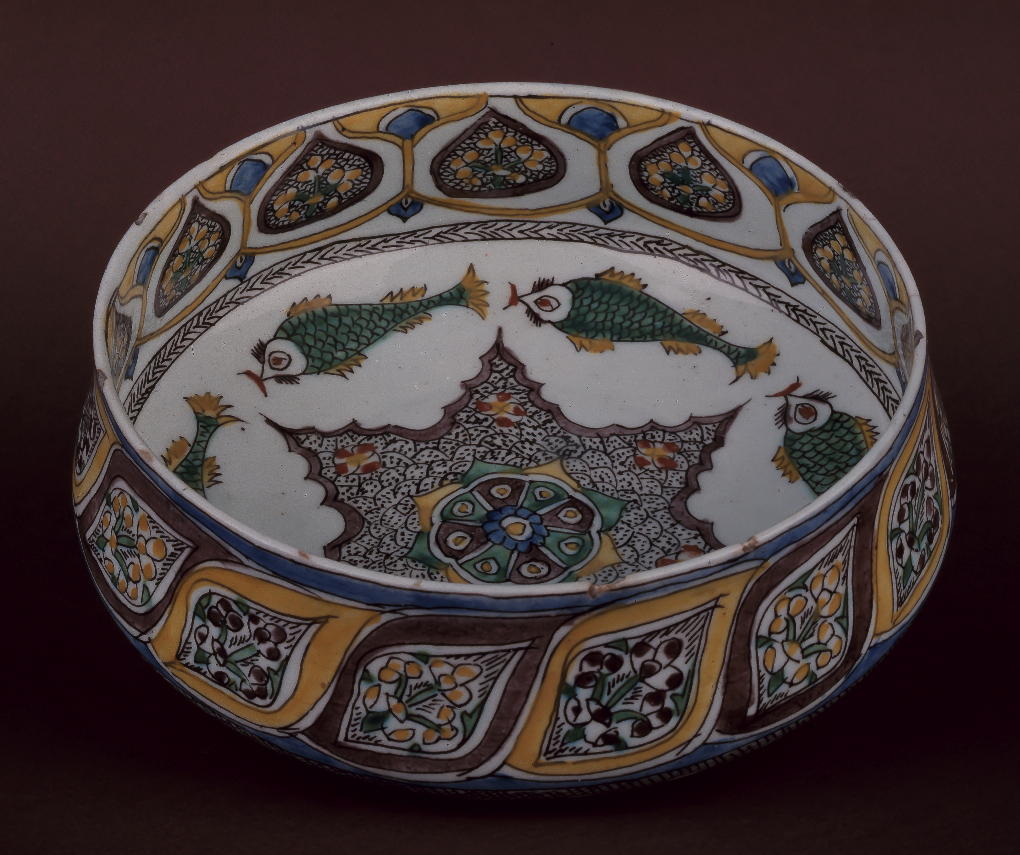
- Oriental Turkey, Kuthaya, 18th century
- Underglaze-painted fritware
- Inv. 927
Bowl
At the end of the 14th century, Armenians settled at Kutahya in Anatolia, about 200 miles from Istanbul. The potteries in Kutahya date back to the 16th century, though their output was virtually unknown until the 18th century when production was at its peak.
Kutahya ceramics are characterised by a siliceous paste, with no slip, an alkaline-lead glaze and a varied chromatic palette in which yellows and greens predominate. While the technique and decoration of Kutahya ceramics was inspired by Iznik ware, its originality on the one hand lies in the use of yellow, and on the other, the abundance of religious motifs.
The central decoration in the interior of the bowl is a six-point star shaped rosette surrounded by fish, which were a symbol of the early Christian church.
Kevork L. Essayan Collection. Acquired by Calouste Gulbenkian through Indjoudyian, 4 February 1922.
Diam. 16 cm
Bochum 1995
Armenian Wiederentdeckung einer alten Kulturlandschaft, exhibition catalogue. Bochum: Museum Bochum, 1995, p. 317, no. 210.
Lisboa 1998
A Arte e o Mar, exhibition catalogue. Lisbon: Calouste Gulbenkian Museum, 1998, p. 163, cat. 134.
New York 1999
Katharine Baetjer and James David Draper (eds.), «Only the Best». Masterpieces of the Calouste Gulbenkian Museum, Lisbon, exhibition catalogue. New York: The Metropolitan Museum of Art, 1999, pp. 22–3, cat. 5.
Nersessian 2001
Vrej Nersessian, Treasures from the Ark. 1700 Years of Armenian Christian Art, exhibition cataogue. London: The British Library, 2001, p. 152, cat. 72.
Lisbon 2001
Calouste Gulbenkian Museum. Lisbon: Calouste Gulbenkian Museum, 2001, p. 71, cat. 51.